Welcome to our #ThomannShredDays. This week it’s all about – you guessed it, shredding! Not only will you find enriching content and incredible deals on our t.blog, but also on our Facebook page. Have a look!
The road to becoming a shredder is a long and rocky one – as you can imagine the amount of countless hours Malmsteen, Vai or Guthrie Govan, have spent practicing their craft until they mastered their instruments as masterfully as we all know. Indeed, such as when learning any technique, shredding takes a lot of discipline and practice and there are no shortcuts!
So here are a few tips on how to reach your shred goals more easily or at least to identify and eliminate the biggest hurdles that might get in the way of your journey.
1. Setting up the guitar for shredding
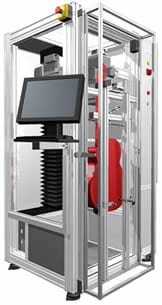 First and foremost, ensure that your battle-axe is optimally prepared. This is often done by a few small adjustments, which can usually be performed by yourself. Those who have two left hands or are faced with unexpected obstacles, can simply take advantage of our service centre, so that our experts can take care of your instrument. Among our services, there is also the PLEK service, a computer-controlled machine that ensures perfect alignment in frets and saddles, while it accordingly adjusts your strings to the desired height.
First and foremost, ensure that your battle-axe is optimally prepared. This is often done by a few small adjustments, which can usually be performed by yourself. Those who have two left hands or are faced with unexpected obstacles, can simply take advantage of our service centre, so that our experts can take care of your instrument. Among our services, there is also the PLEK service, a computer-controlled machine that ensures perfect alignment in frets and saddles, while it accordingly adjusts your strings to the desired height.
Let’s start with the guitar neck. The truss rod needs to be re-adjusted from time to time, depending on the string gauge used, but also after long periods of use (we’re talking years). The neck must neither be straight or curved upwards (convex), but should have a slight downwards curvature (concave).
String action is usually determined by the distance between the upper edge of the fret and the lower edge of the string at the 12th fret. Tried and tested values for the high E-string is approximately 1.8 mm, and approximately 2mm for the deep E-string. Starting from these two values you can adjust the action according to your own taste and preference yourself. But there are limits to this, because at a certain point the strings are in danger of hitting the frets, producing unwanted fret buzz with every note. As long as this is only audible acoustically and not through the amp, it may be tolerable, but if the strings start to buzz, the dynamics will also suffer. Here everyone should decide for themselves, as to how low they prefer it. A good tip is to bend your strings in various positions – if the sound doesn’t buzz and every note is clear and doesn’t die off straight away, you’re action is good.

Generally speaking, Shredders have more of a preference for flat C-neck shapes with a large radius, and less of a preference for V neck shapes, which are slightly thicker.
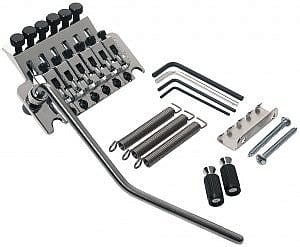 Tremolos should also be subjected to closer examination. In the case of vintage tremolos, all saddles should be aligned properly with the screws at the right tension, in order to transmit the vibrations optimally. How you adjust the springs is your discretion. If the Tremolo is only used downwardly then the unit can be tilted backwards, but when used upwards, the springs should be a tad loosened, so that it can tilt a little forward. This is different with a Floyd Rose Tremolo! This should be as parallel to the body as possible for optimal performance. Pay attention, especially when switching to another string gauge as to how it behaves and whether further adjustments are needed.
Tremolos should also be subjected to closer examination. In the case of vintage tremolos, all saddles should be aligned properly with the screws at the right tension, in order to transmit the vibrations optimally. How you adjust the springs is your discretion. If the Tremolo is only used downwardly then the unit can be tilted backwards, but when used upwards, the springs should be a tad loosened, so that it can tilt a little forward. This is different with a Floyd Rose Tremolo! This should be as parallel to the body as possible for optimal performance. Pay attention, especially when switching to another string gauge as to how it behaves and whether further adjustments are needed.
2. Strings and pickups
Let’s talk about string gauge. Here again we have to balance sound for comfort: thin strings are easier to bend and play, while thick strings have more volume. Most shredders use 009 or even 008 sets (like Malmsteen or Holdsworth), while others use 010 or even 011, which also brings excellent results.
A good compromise is using “Heavy Bottom – Light Top” strings, which are hybrid sets of two sizes: the bottom strings come from a heavy string set (e.g. 010), whereas the top strings are from a lighter set (e.g. 009), Power chords will sound richer, while top string bends will be easier.
- Elixir Nanoweb Light
- Harley Benton 010 Valuestrings
- Daddario EXL110
- Ernie Ball 2221
- DR Strings Tite Fit MT-10
- Fender 150R
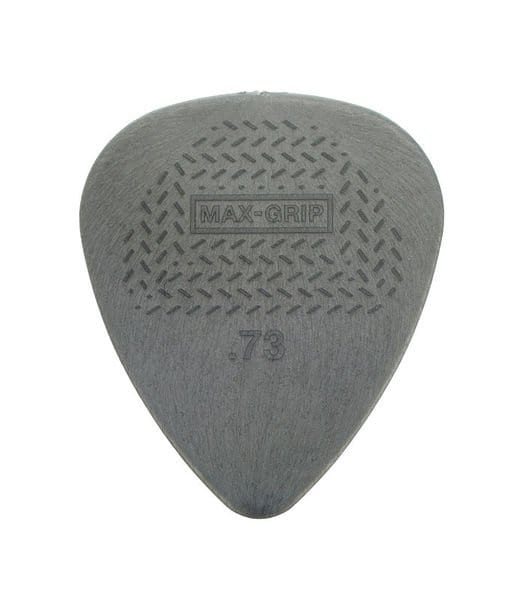 You should also wisely choose the thickness and shape of your plectrum. High precision is easier obtained by tapered plectrums in the 1mm range, so not too thin, which is why the “Jazz III” from Dunlop or Hawk Picks are the most popular among shredders. Here are some tips in picking your pick!
You should also wisely choose the thickness and shape of your plectrum. High precision is easier obtained by tapered plectrums in the 1mm range, so not too thin, which is why the “Jazz III” from Dunlop or Hawk Picks are the most popular among shredders. Here are some tips in picking your pick!
Many shredders seem to have a preference for humbuckers when choosing their pickups. This is because they provide a hum-free higher output, as well as the fact that the sharp transients caused by fast, hard picking are transmitted less prominently than with single coils, especially at the bridge pickup. However, if you think of guitarists such as Yngwie Malmsteen, then even pickups also have a prominent exception to the rule. It’s always good to experiment!
3. Hand & finger technique and correct shredding practise
Setting up the guitar is not even half the battle when you’re qualifying for the Shredder Olympus: it takes hard work!
First of all let’s take a closer look at finger and hand posture.
Gripping hand:
Place your thumb in the middle of the neck and try to keep your fingers as close to the fretboard as possible. The shorter distance they need to travel, the more economical and faster they’ll be able to move.
Picking hand:
Hold your plectrum relatively straight or at a maximum of 45 degrees relative to the strings and avoid inserting it too deep past the strings. Focus on small movements!
You are currently viewing a placeholder content from YouTube. To access the actual content, click the button below. Please note that doing so will share data with third-party providers.
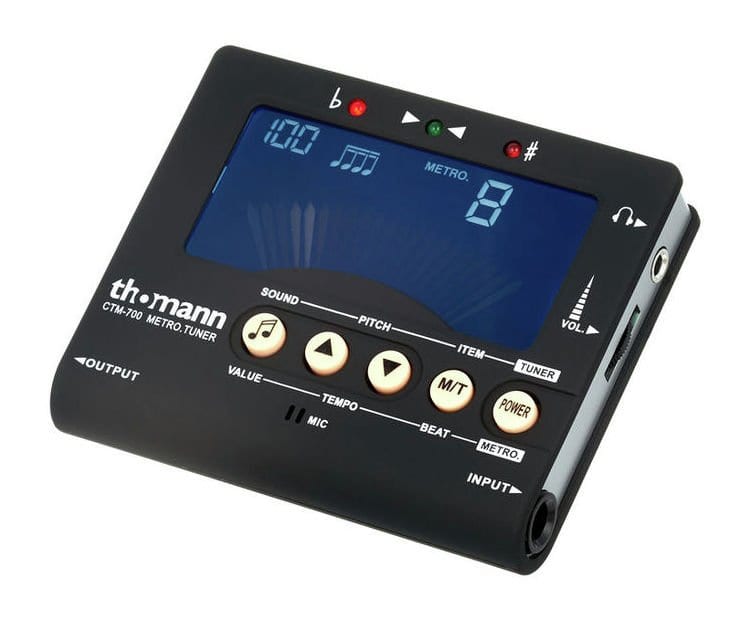 There are various techniques and appropriate exercises to master the art of shredding. One of the most important is surely alternate-picking, which provides excellent right and left hand coordination. These can be scale sequences, chromatic or pentatonic exercises, and in tempo with the aid of a metronome, while focusing on precision over speed.
There are various techniques and appropriate exercises to master the art of shredding. One of the most important is surely alternate-picking, which provides excellent right and left hand coordination. These can be scale sequences, chromatic or pentatonic exercises, and in tempo with the aid of a metronome, while focusing on precision over speed.
It is also recommended to exercise the strength and endurance of your grip hand, i.e. legato runs are best combined with stretching. Make sure you strengthen all your fingers and pay extra attention to the pinky finger, which is often the weakest link in the chain. It is also quite useful to put your hand in a widely stretched position and hold it there for certain duration.
Once you have mastered these two main techniques, you can move to more specific techniques, such as sweep arpeggios, tapping, and string skipping, and on to a mix of your own style. Because what all the really good shredders have in common is that they all have their very own unique sound.


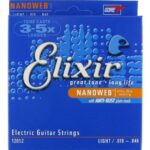


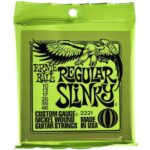
















Comments 1